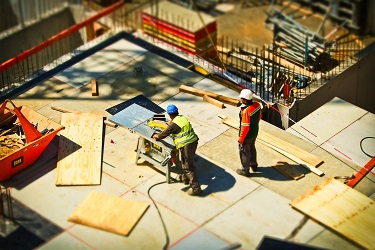Why Sitework is a Necessary Step in Preparing a Construction Site
 Preparing a site for construction is a key component to the success of a project. Depending on the requirements of a construction, there may be any number of things done to prepare the site. As a critical piece to any construction, sitework typically centers on any of five unique processes.
Preparing a site for construction is a key component to the success of a project. Depending on the requirements of a construction, there may be any number of things done to prepare the site. As a critical piece to any construction, sitework typically centers on any of five unique processes.
Clearing the site
The first preparatory process involved in sitework and one that is quite standard among all construction sites is clearing and grubbing. At this stage, one removes any trees, bushes, or plants from the site. Depending on the extent of the vegetation located on a site, there may be more to it than a simple clear. In the event of more substantial work, always ensure environmental regulations and local laws are followed.
Stabilization
To maximize the safety of a construction site and to ensure the long-term success of a structure, subgrade stabilization needs to happen. This involves stabilizing the soil levels found immediately below the topsoil. By doing this stabilization, you guard against the ground shifting or caving in while the project is ongoing or after completed. When this step is left undone, it opens up the possibility of foundation cracks, structural damage, and even a complete building collapse.
Erosion control
Construction sites expose the ground to significant issues regarding weather, erosion, and the potential of collapse. Proper erosion control methods need to be taken to protect against a site becoming unsafe. By failing to take this step, workers and equipment may be placed in danger. Delivering a quality product on schedule and on budget requires safety precautions, such as erosion control, to be taken. The expense of not doing so is a potential loss of human life.
Excavation
Excavation is a key component of sitework that is very common among many construction sites. The process of excavation, as so many contractors already know, is the removal of soil, rocks, and other ground materials that do not need to be there. This part of sitework can require significant time and expense, depending on the site selected. This requires construction workers with specific experience in excavation to be able to accomplish.
Drainage systems
The last stage of sitework that construction site managers should be aware of is drainage systems. A high quality drainage system will help get any rain water out from the area, protecting equipment and construction workers on the job. The process of establishing a drainage system, again, maximizes on-site safety while ensuring workers are being protected from hazard.
The importance of sitework in the Canadian construction industry is high. Fortunately most contractors recognize how integral sitework is to safety and do what needs to be done to ensure all parties are protected.
The preliminary work in getting a site prepped is sometimes timely and intensive but it is a necessary part of the construction process. The preparatory activities a contractor chooses to follow through on depends on the site and the environmental conditions that surround it. By accomplishing sitework, a contractor sets the tone for the remainder of the project, communicating to stakeholders that they hold safety as a priority and are prepared to get the work done.
Now that we’ve identified the different types of sitework and the factors that play into it, understand that keeping good sitework as a top priority in your construction contracting business is the right thing to do.


